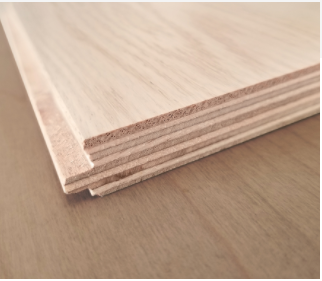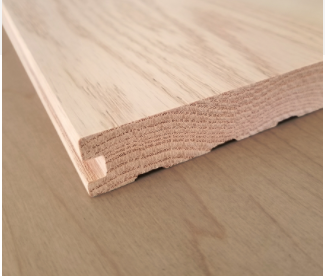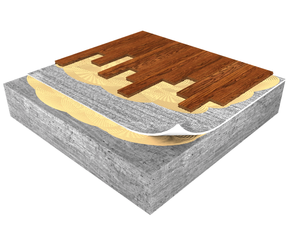
Why choose engineered wood flooring?
An engineered wood floor is made of a hardwood layer glued to a plywood or HDF core. Added to this are various types of substrates, thicknesses and types of sawing of the hardwood layer itself. But among all the available options, how does one make an informed choice? Let’s review the things to consider when choosing an engineered floor that is suited to your situation and your needs.
Engineered flooring
Engineered flooring is comprised of a 4 mm thick hardwood top layer, glued to a plywood base.
Hardwood 3/4" thick flooring
First, an engineered wood floor is the best solution for an installation on a concrete subfloor, as in a condo or basement. These are precisely the situations that led to engineered flooring making its entrance onto the floor covering market, since it enabled the installation of a hardwood floor in places where it was not possible before, or at least much more complex. Before this innovation, a structure had to be installed over the concrete subfloor to allow the nailing of the solid wood floor, therefore increasing the cost and final height of the floor.
These engineered floors were a welcome innovation, as they are easy to install, whether glued or floated, directly onto a concrete subfloor or on, below or above grade.
Glued installation
An engineered floor can be glued using a water-free adhesive whose elasticity allows the wood to expand and retract. It can be affixed directly onto the concrete subfloor or by adding a soundproofing membrane. For this type of installation, the membrane is affixed to the concrete slab with adhesive before gluing the floor to the surface.
An engineered floor affixed to the subfloor is very comfortable and stable when walked upon, without the “floating” sensation that is typical of floating installations. Challenge anyone to tell if the appearance of an engineered floor once installed, is any different from a 3/4" solid hardwood floor! The difference is imperceptible, regardless of the thickness of the platform.
Since a glued or double-glued installation (over a membrane) is more costly than a nailed down installation, it is smart to choose an engineered floor with a hardwood layer of at least 2.5 mm thick, as it will allow eventual re-sanding, if needed. Don’t forget that as hardwood floor lasts for decades. It is thus advantageous to invest in a product that will offer the highest added value!
Floating installation
A floating method can also be used to install an engineered floor by applying glue in the floorboard key. Some engineered floors were also designed using a “loc or clic” system. Not to be confused with laminate flooring that has a plastic top layer that imitates wood and that is also installed using a floating installation! An engineered loc wood floor is made of a hardwood top layer glued to a HDF substrate. Its loc system does not require attachments such as staples or nails upon installation. A floating engineered floor will not allow the sanding of the wood surface. In this case, a floor with a thinner wood top layer could be a good choice for this type of installation.
Wood floor with a loc or clic system for a floating installation.
Although some engineered floors are made with a hardwood top layer as thin as 0.6 mm, it is recommended to choose a flooring with sliced veneer layer to obtain a more authentic wood grain look that is similar to solid hardwood flooring. Contrarily, a “rotary peeled” surface will have a different wood grain with a distinctive pattern.
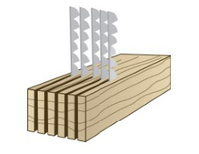
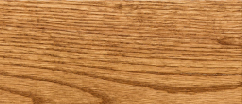
Sawn cut
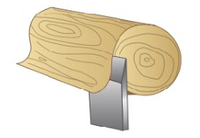
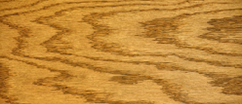
Rotary-peeled cut
Image courtesy of NWFA.
Wider and wider boards
This shrinkage and swelling aspect of the floorboards becomes most important with the increased popularity of wide boards (6 1/2” wide and more). During the winter, the spaces between the boards are significantly smaller thanks to the increased stability of these products. Customers who avoided wide boards because they are afraid of wide spaces or instability of the floorboards during season changes can rest assured that these engineered floors are the best option for such situations.
Although initially offered in 1/2” thick, engineered floors have become a top choice for traditional installations on wood subfloor (OSB or plywood) by being 3/4” thick, the same as a solid hardwood floor. It is now possible to install an engineered wood floor adjacent to a solid hardwood 3/4” floor without having to add a layer of plywood to the subfloor! An innovative way to simplify the installation and related costs of a hardwood floor.
What’s best: nail or glue?
The question is irrelevant in the case of an installation directly on a concrete subfloor where only a glued installation is suited. However, for an installation on a wood subfloor (plywood or OSB), an engineered floor can be installed with mechanical fasteners. You must carefully follow the manufacturer’s instructions when choosing the fasteners, as they need to be of specific length and width so as not to damage the keys (tongues and grooves) during installation. The nailing sequence will often be less than for a solid hardwood floor and depending on the board width, may required some glue assist.
Installing an engineered floor on radiant heating subfloor
Another benefit of an engineered floor is its compatibility with radiant heating systems (underfloor heating). Although most engineered floors can be installed on radiant heating, ask the wood floor manufacturer for their recommendations before making your choice. Exotic wood species and more reactive ones are often not indicated for this type of installation. Furthermore, restrictions apply regarding the maximum heating temperature that the wood floor can sustain. Most floor manufacturers will require that the radiant system not be in direct contact with the heat source and will suggest adding an additional thermal mass, such as plywood or concrete, between the floor and the heating wires or pipes.
This type of heating works with engineered floors, but requires extra vigilance to maintain ambient humidity levels, recommended temperatures, and deal with seasonal changes. This type of installation is a good option for owners who are aware and won’t be bothered if the floor has little more pronounced spacing or slight natural imperfections during the heating season.
How are engineered floors rated, from an environmental and health standpoint?
There are as many answers as types of engineered floors on the market, and the environmental view itself could be the subject of an entire article. Hundreds of products from various sources are available on the market. However, some key elements should be considered before making a final choice.
First, a product that is manufactured totally or in most part in Canada is an initial guarantee of quality when it comes to the choice of components that go into the product itself and respecting environmental standards during the manufacturing process.
In addition to manufacturing, look for Greenguard, Greenguard Gold or Floorscore-certified floors. These independent certifications confirm that the emanations of volatile organic components or formaldehyde from the floor respect established standards and are safe for human health.
There are several composite materials on the market, ranging from vinyl combined with wood, to calcium carbonate powder which can contain questionable extractable compounds. Engineered floors that are made of resinous wood substrate, or plywood with a hardwood surface layer are free from many additives that are hard to identify. As in the case of a healthy diet, simple, natural and few ingredients often make the best recipes!
In terms of product durability, choose engineered floors with finishes that will protect them for many years to come and will delay the need for re-sanding. An engineered floor with a 2.5 mm thick hardwood top layer that is affixed to the subfloor can be re-sanded, prolonging its life for many years! Is it smarter to choose a disposable or reusable floor? The answer is obvious!



